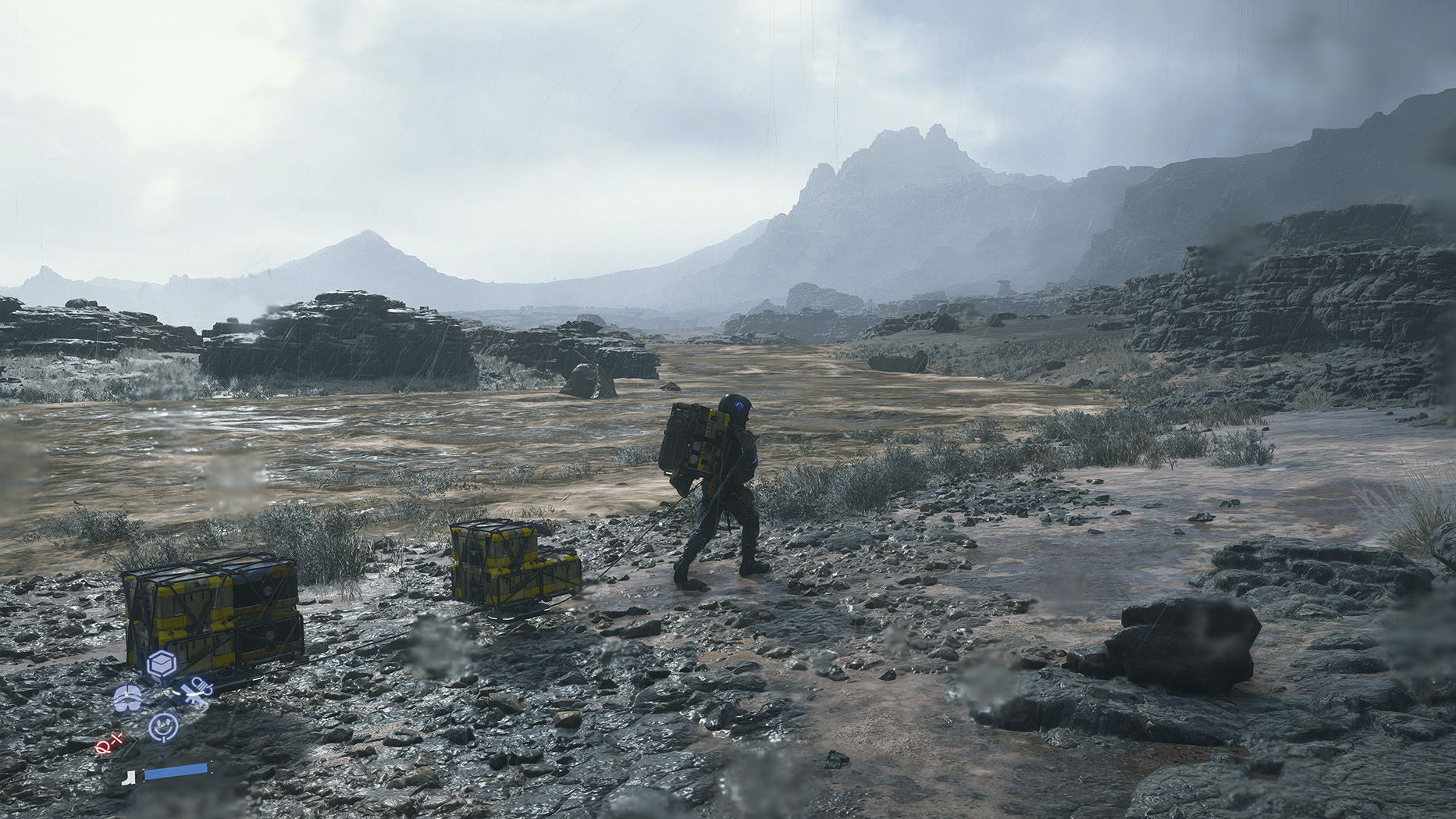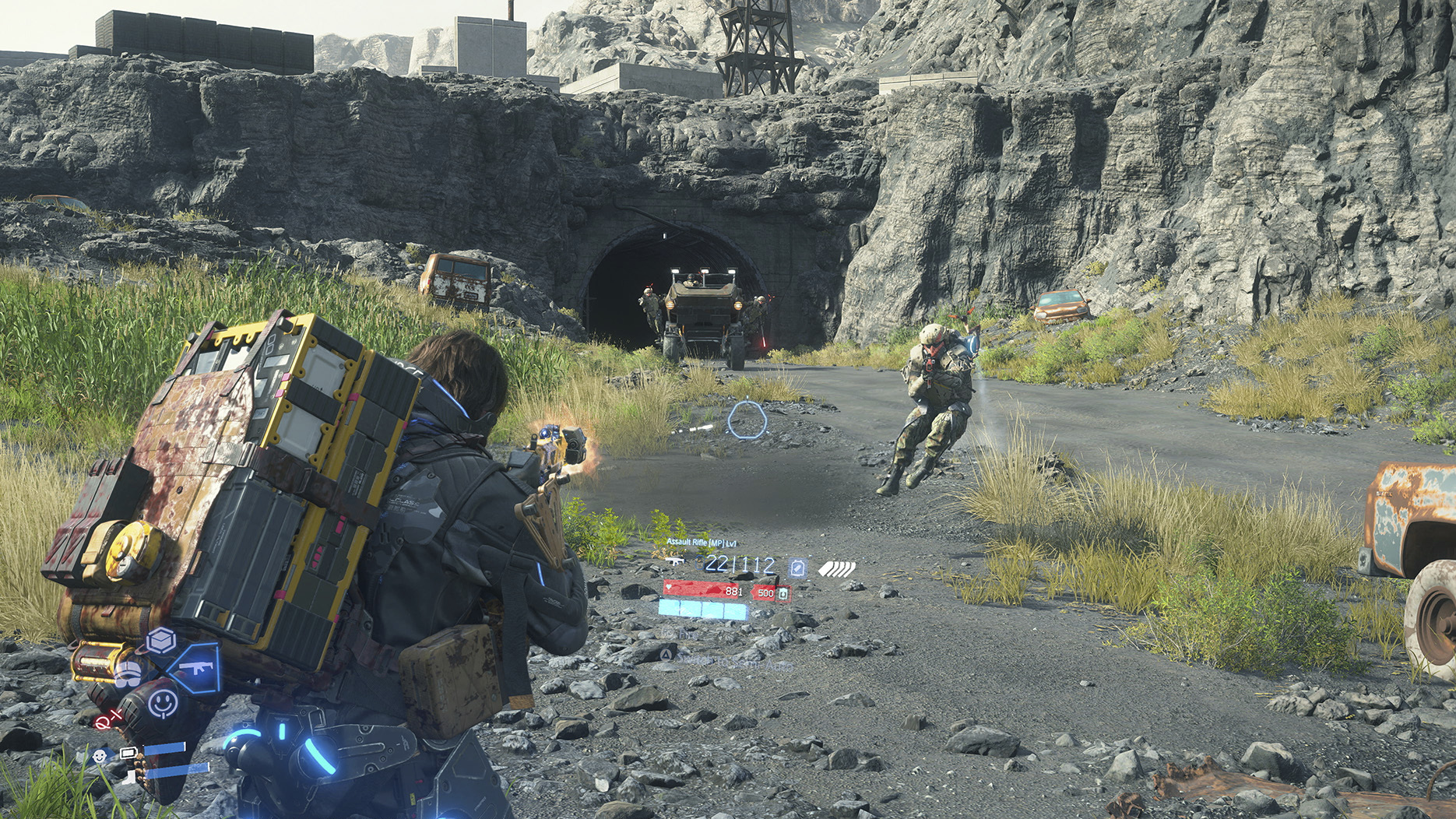Back in 2019, video game auteur Hideo Kojima and his studio, Kojima Productions, released their highly-anticipated game, “Death Stranding.” It was a highly divisive game, with some critics praising its sci-fi universe while others lambasted its glorified “delivery simulator” gameplay. Its story concepts were completely out of the box, and arguably only Kojima would have the guts to create such laborious gameplay mechanics to challenge players.
Its sequel, “Death Stranding 2: On the Beach,” is pretty much the same tune. It expands on the post-apocalyptic setting and tells a telling story about protagonist Sam Porter Bridges dealing with love and loss. It also provides new gameplay enhancements to make cargo transportation much less frustrating than in its predecessor.
Due to an event called the Death Stranding that merged the world of the living and dead together, deadly explosions occurred that destroyed the world’s environments and collapsed modern society. Its citizens now live in isolated underground bunkers and avoid as much human contact as possible. “Death Stranding 2” takes place 11 months after the events of the first game, in which Sam connected all of North America to the Chiral Network, a system of nodes that connects the different bunkers throughout the continent and allows the transfer of data and its inhabitants to reconnect with each other again.
This time around, Sam takes his talents to Australia, where he must go through the same process and bring the country onto the global Chiral Network. Along the way, Sam will have to stop another extinction event from coming to fruition. It’s almost beat-for-beat the same plot as the first game, but focuses much more on the origins of Lou, Sam’s adoptive baby.

Lou’s past has been cloaked in shadow, but this sequel finally helps establish where she came from and how she eventually became acquainted with Sam. This adds a much more personal touch to Sam’s story than before.
As for the gameplay, players will have to deliver cargo and items throughout a large open world to different locations—the way paved with natural barriers like mountains, rivers, and tundras. The delivery itself is the gameplay. Sam can carry a limited amount of cargo, with each item producing its own weight and dimensions, and it’s up to you to figure out how to balance them on his body. There’s a puzzle-like quality to the process to make sure you optimize the amount of space you have. While traveling through terrain, you’ll have to be aware of your surroundings, and not slip and fall, potentially damaging the cargo.
There’s a lot of thought that goes into each delivery, including which suit to wear to camouflage yourself from enemies, as well as what kinds of boots to wear so that your feet don’t bleed and drain your HP. There’s an immense amount of satisfaction from completing a long trek through the mountains to your destination. Each delivery is different, which keeps the journey feeling fresh despite essentially doing the same thing every time.
What also helps each delivery is the number of buildable structures you can build, ranging from roads to ziplines. Building these structures can help make transporting cargo easier, and creating a giant network between different cities feels very fulfilling. There’s nothing like seeing Sam easily zip through mountains in minutes that could potentially take hours to cross on foot. “Death Stranding 2” also incorporates some new structures, such as an instantaneous transporter that lets you fast travel back to any city, although your cargo won’t come with you, of course, as that would be too easy. You still have to do the manual work. These new additions are just enough to make the sequel’s gameplay feel a bit more evolved than its predecessor’s, even if largely unchanged.

“Death Stranding 2” also has more action and cinematic moments than before. Sam has a variety of weapons from pistols, machine guns, and rockets to fight off hostile cargo thieves and BTs, the latter of which are shadowy supernatural entities that straddle between life and death. In particular, BTs require a much more stealthy approach, as coming in contact with one can cause your cargo to slip in a pool of tar. These shootouts and encounters provide moments of excitement and tension between monotonous delivery tasks.
However, the shooting controls feel incredibly flimsy. The process of equipping weapons from the menu is cumbersome, and there have been numerous instances when I tried to push the left trigger to aim down sights and my controller was unresponsive. These were issues in the first game, and it’s disappointing that they weren’t adequately addressed here, making combat feeling clunky. On the other hand, the game makes great use of the DualSense controller’s haptic feedback features. You can hear the rain, called Timefall, lightly tap through the controller’s speakers and feel the little bumps as Sam trudges on rocky terrain. Timefall is a special kind of rain that rapidly ages and degrades anything it touches. I’ll get a notification that my items are deteriorating while simultaneously literally feeling it through the controller. The level of immersion heightens the atmosphere of the post-apocalyptic world, making you feel a stronger connection to its sci-fi elements.
“Death Stranding 2: On the Beach” is more of the same, so if you didn’t enjoy the first game, this sequel is unlikely to change your mind. The storytelling and atmosphere is unmatched, and the game is going to be just as divisive as its predecessor. Various improvements help alleviate some of the more frustrating elements in the cargo-delivery gameplay, but the combat is still stale at times. It’s a game that you’ll need to put a lot of work into to feel any gratification. If you keep an open mind, you’ll experience one of the best sci-fi universes ever crafted.
The publisher provided a review copy of this title. It is available exclusively for the PS5.
from Roger Ebert https://ift.tt/ekHdtZE

.png)
.png)


